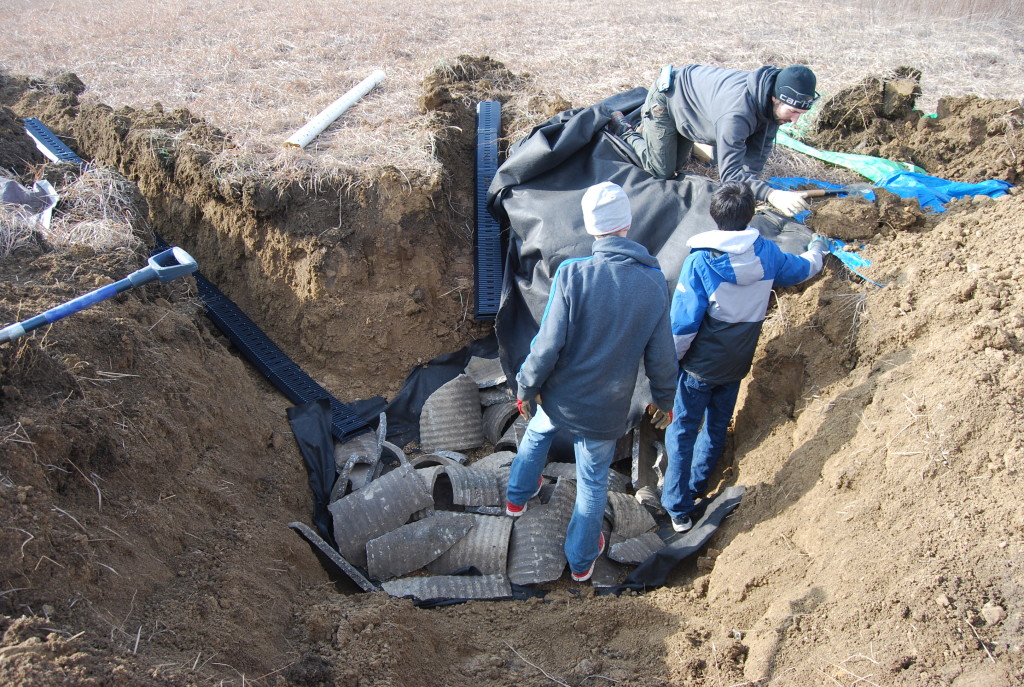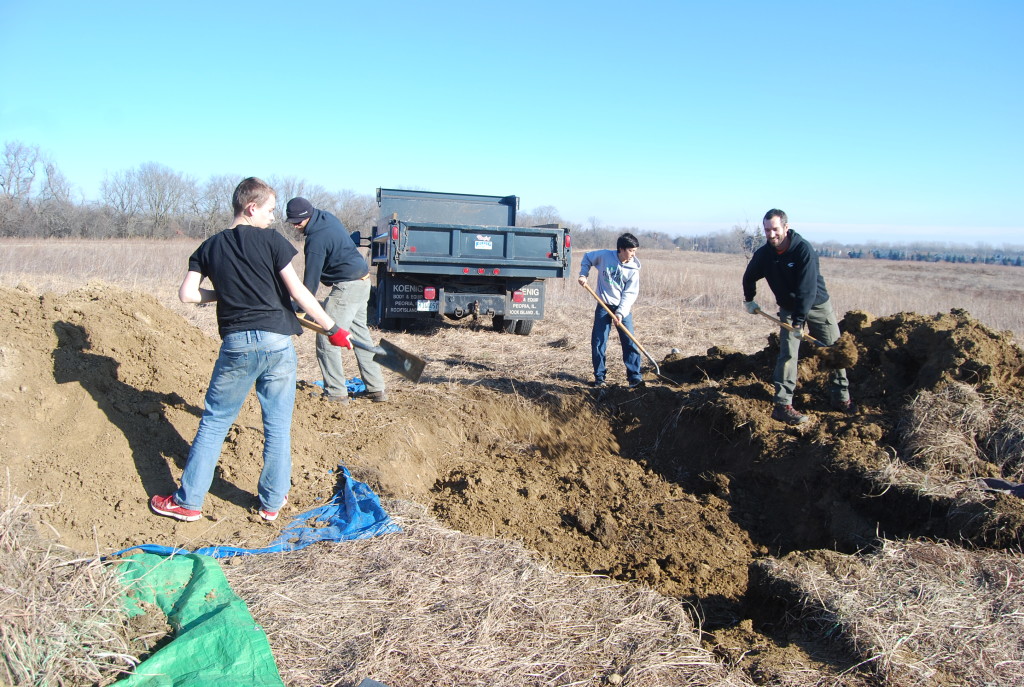This week the environmentally-oriented charter school my younger son attends held a fair at which eighth graders shared information about the culminating projects they had been required to complete before they could graduate.
My son and his classmate had an unusual project on which to report. They had built, with the substantial help of the local township open space district and a local herpetologist, a snake hibernaculum at a local nature preserve.
Hibernaculum is a fancy scientific word for a snake den that allows snakes to safely survive the winter. To survive winter’s cold, snakes need to get to find places where the temperature stays above freezing. Some smaller snakes can use the holes of crayfish to get below the frost line. Some seek out animal burrows or even holes in the ground formed by rock formations and fallen trees whose roots have rotted away.
As we have filled up the landscape with buildings and roads, however, we’ve created smaller and smaller islands of habitat. Each small island is much less likely to have natural overwintering sites of its own. And because snakes can’t fly, the snakes will usually end up dead and flat if they try moving from their island to another in search of shelter from the winter.
In other words, snakes need help. Snakes need saving.
The basic concept of man-made structures to help nature out isn’t new. People have been doing this kind of thing with bluebird houses for many decades. Without man-made bluebird houses to provide the cavities bluebirds need for creating nests and without the monitoring needed to keep out violently aggressive European starlings and house sparrows, we’d have very few of those beautiful birds around.
The success of blue bird boxes tells us something profound. It tells us that we can have the will and the ability to be Good Samaritans for other members of God’s Creation.
But are we willing to do that for snakes?
For many of us, they fill us with unease or worse. In fact, snakes have been persecuted for far too long, far too festively, and far too often by Christians who should know better. But snakes have a beauty all their own (Proverbs 30:19) and ecological value, too.
Seeing Creation as God would have us see it rather than through the prism of human culture is one important way that Christians can truly be the salt of the earth. That means we should see value in birds that add bright flashes of blue to our landscape and in other creatures.
The hibernacula created by my son, his classmate, and the local township staff was an all-day affair that required heavy-duty equipment. By the afternoon, our arms were dead tired as we shoveled dirt back into the larger hole in which the main chamber of the hibernacula had been constructed with drain tile pipes, portions of PVC tubes, as well as large and small stones. We created small mounds of stones to camouflage and protect the two entryways as well.
There was a certain tiredness and even doubt in my heart as well.
Was all of this work going to make a difference? Unlike the construction of bluebird boxes, we didn’t know at the end of the day whether the hibernaculum would ultimately be successful. The art and science of snake hibernaculum construction are still very young.
Yet, it felt good to do something. I was proud of my son and his friend for pushing this project through a number of obstacles to completion. And I was profoundly grateful to the staff ot the local township and to the herpetologist whom all responded so enthusiastically and helpfully when the boys contacted them.
As I’ve thought further about that day, I also believe we were answering a fundamental calling. We’re called to use all of the creativity and ingenuity we’ve been blessed with to care for and to mend our Father’s world. We’re all called to be good shepherds.
Even when it’s hard and challenging.
Even when there is no guarantee of success.
Even when snakes need the shepherding.
P.S. The local herpetologist who helped the boys shared with us the story of an unusual hibernaculum. Some years ago western fox snakes at a local natural area had begun using the hollow cinder block walls of the basement of a nearby home as a place to survive the winters. When the landlords of this rundown building contacted him, he was able to begin implanting little passive transponders in each one. This allowed him to monitor when each individual snake came into the basement during the fall and when it departed in the spring. At the peak, there were over one hundred snakes in the basement.
One of the tenants had been an elderly woman who lived there by herself. When the occasional fox snake, which is not a poisonous species, would find its way upstairs and even into her bathtub, she didn’t panic. Instead, she would call her son, and he would drive over and bring the snake safely back down into the basement.







